#559 Dark Bok Globules in IC 2944 December 29, 1996
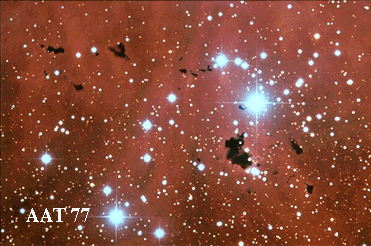
“The dark spots in the above picture are not photographic defects but an unusual type of interstellar cloud known as a Bok globule. Bok globules, named after astronomer Bart Bok who studied them extensively, are small dark clouds made of gas and dust that are typically condensing to form a star or stars. These Bok globules are found in front of a glowing H II region known as IC 2944. "
Copyright: Anglo Australian Observartory
#560 X-Ray Earth December 30, 1996

“The Earth glows in many kinds of light, including the energetic X-ray band. Actually, the Earth itself does not glow - only aurora produced high in the Earth's atmosphere. Above is the first picture of the Earth in X-rays, taken in March with the orbiting Polar satellite. Bright X-ray emission is shown in red. Energetic ions from the Sun cause aurora and energize electrons in the Earth's magnetosphere. These electrons move along the Earth's magnetic field and eventually strike the Earth's ionosphere, causing the X-ray emission. These X-rays are not dangerous because they are absorbed by lower parts of the Earth's atmosphere."
Copyright: Public domain
#561 Io Rotating December 31, 1996
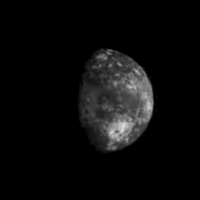
“Are any volcanoes on Io currently erupting? To help answer this, scientists instructed the robot spacecraft Galileo to take hourly pictures of this moon of Jupiter prior to its most recent encounter. The most obvious changes in Io are due to the changing amount of sunlight reflected from the moon to the spacecraft. More careful inspection does verify continuous volcanic plumes. The most prominent plume visible is from Prometheus, visible just below Io's equator. This plume was first photographed in 1979 by Voyager, so Prometheus appears to have been erupting continuously for at least 18 years! On most browsers, the above picture will appear animated. To stop the movie, click on your broswer's "stop" button. "
Copyright: Public domain
#562 Aurora Over Circle, Alaska January 01, 1997
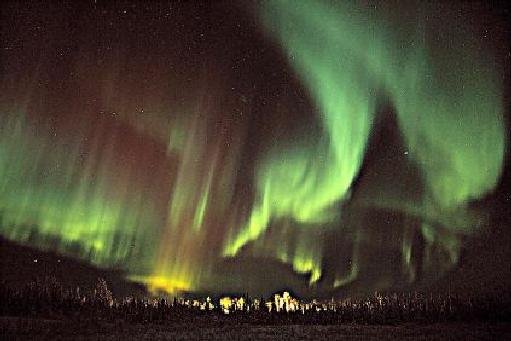
“Aurora can make spectacular sights. This particular aurora was photographed hovering over the town of Circle, Alaska. Although Aurora might first appear to be moonlit clouds, they only add light to the sky, and hence can not block background stars from view. Called "northern lights" in the northern hemisphere of the Earth, aurora are caused by charged particles streaming from the Sun entering the Earth's atmosphere. If viewed from space, aurora glow in X-ray light as well as in the visible! Several WWW sites can tell you if aurora are predicted to be visible in your area."
Copyright: Dick Hutchinson
#563 Bubbles and Arcs in NGC 2359 January 02, 1997
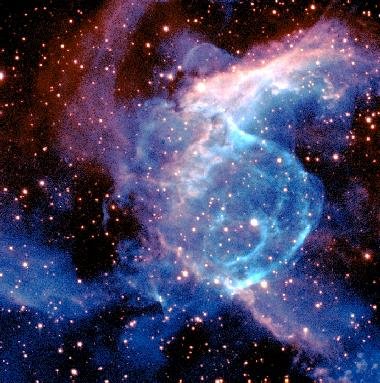
“What caused the bubbles and arcs in NGC 2359? The main suspect is the Wolf-Rayet star in the center of one of the bubbles - visible slightly below and to the right of the center of the above photograph. Most Wolf-Rayet stars are known to be massive, highly luminous stars that continually cast off material in a stellar wind - which commonly form bubbles in the interstellar medium. But the unusual structure of the NGC 2359 arcs indicate something more complex is going on. Is the star moving supersonically? Is there another energetic star in the vicinity? Future observations may give more pieces to this picturesque puzzle. "
Copyright: CfA1.2-m TelescopeWhipple Obs
#564 A Wolf-Rayet Star Blows Bubbles January 03, 1997
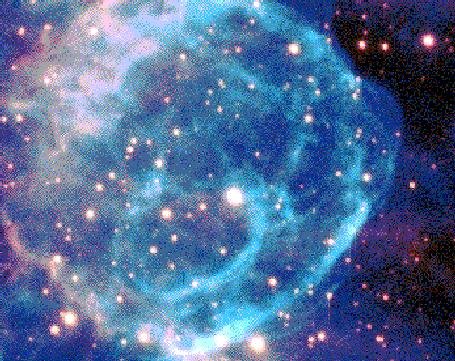
“Wolf-Rayet stars can blow bubbles. These unusual stars are much hotter and more luminous than our Sun. All extremely massive stars will eventually evolve though a Wolf-Rayet phase. Approximately 200 Wolf-Rayet stars are known in our Milky Way Galaxy. Wolf-Rayet stars generate bubbles because they continually eject their outer atmosphere as a stellar wind. This outgoing wind of particles typically carries away more than the mass of our Earth each year! The wind is caused by atmospheric particles absorbing outgoing starlight, although many details of this process are unknown. The Wolf-Rayet is the brightest star in the above picture and is in the center of the large bubble in the nebula known as NGC 2359. "
Copyright: CfA1.2-m TelescopeWhipple Obs
#565 A Star Where Photons Orbit January 04, 1997

“The above computer animated picture depicts how a very compact star would look to a nearby observer. The star pictured is actually more compact that any known except a black hole, so it is only hypothetical. The observer is situated at the photon sphere, where photons can orbit in a circle. To help the viewer better visualize the great distortions created by gravity, a map of the Earth was projected onto the star, and a map of the familiar night sky was projected above. From here one can either look down and see several duplicate images of the entire surface of the star, look up and see several duplicate images of the entire night sky, or look along the photon sphere and see the back of one's own head. "
Copyright: Robert NemiroffMTU
#566 Too Close to a Black Hole January 05, 1997
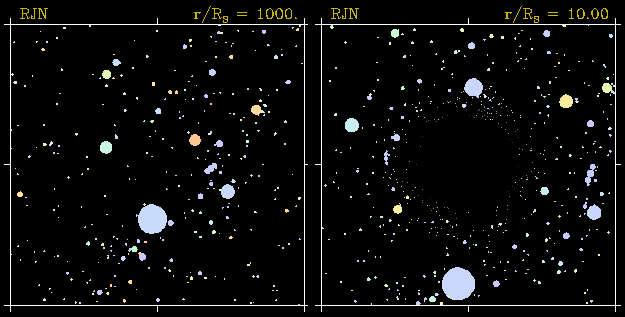
“What would you see if you went right up to a black hole? Above are two computer generated pictures highlighting how strange things would look. On the left is a normal star field containing the constellation Orion. Notice the three stars of nearly equal brightness that make up Orion's Belt. On the right is the same star field but this time with a black hole superposed in the center of the frame. The black hole has such strong gravity that light is noticeably bent towards it - causing some very unusual visual distortion. In the distorted frame, every star in the normal frame has at least two bright images - one on each side of the black hole. In fact, near the black hole, you can see the whole sky - light from every direction is bent around and comes back to you. Black holes are thought to be the densest state of matter, and there is indirect evidence for their presence in stellar binary systems and the centers of globular clusters, galaxies, and quasars. "
Copyright: Robert NemiroffMTU
#567 Blue Sun Glaring January 06, 1997
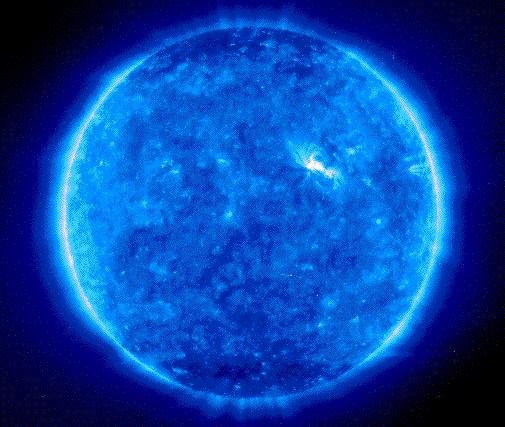
“The Sun is a bubbling ball of extremely hot gas. In this false-color picture, light blue regions are extremely hot - over 1 million degrees, while dark blue regions are slightly cooler. The camera filter used was highly sensitive to the emission of highly charged iron ions, which trace the magnetic field of the Sun. The rich structure of the image shows the great complexity of the Sun's inner corona. A small active region can be seen just to the right and above center. This picture was taken in ultraviolet (extremely blue) light by the Extreme-ultraviolet Imaging Telescope (EIT) on board the Solar and Heliospheric Observatory (SOHO) spacecraft, which is orbiting the Sun just ahead of the Earth, at the L1 point. SOHO was launched in 1995 and will continually monitor the Sun for several years."
Copyright: Public domain
Upvote! Resteem! Comment! As you like it! Thank you for attention!